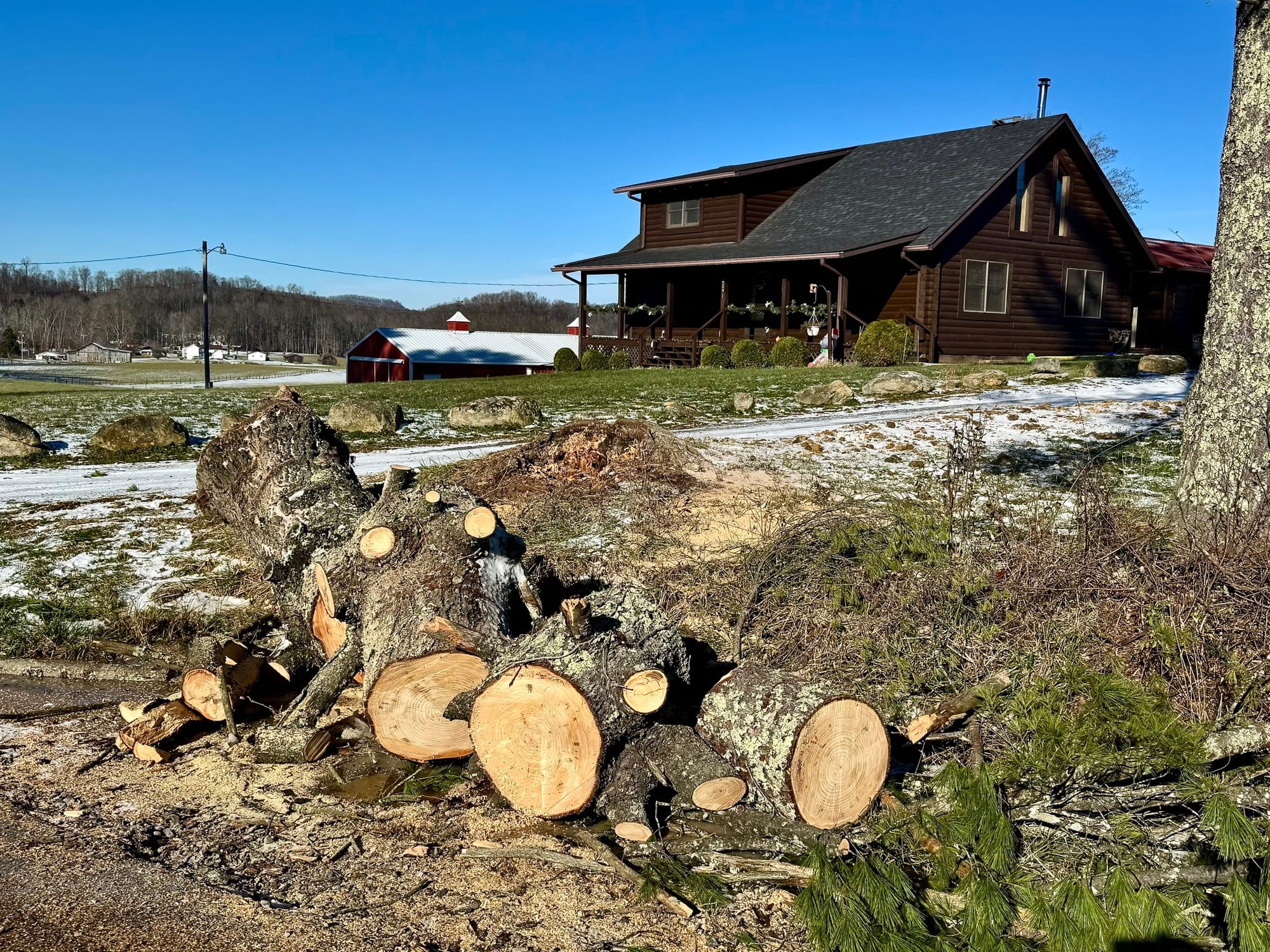Goldberry Grove: Ides of March

Spring is here, and that means Goldberry Grove is officially moving from planning to planting. February wrapped up with the completion of all Phase 1 purchases, and March is all about pickup and preparation. We’re bringing in our first batch of Chinese Hybrid Chestnuts along with our entire windbreak planting—a critical piece for long-term resilience on the farm.
Phase 1: What’s Happening on the Ground?
Before we can plant, we need to clear out the unnecessary and constricting fences in our front fields. The goal? Open up space for high-quality chestnut, hazelnut, and black walnut plantings while also fortifying the western property boundary with a dense windbreak.
We’re also kicking off infrastructure work, setting up air prune beds for tree propagation and prepping the garden/bare root production soil. The long game here is not just growing trees but creating a reliable system for producing and selling high-quality seedlings in the future.
Tree Pickup & Nursery Visits
I’ll be making the drive to Ohio’s Route 9 Cooperative to pick up our first round of trees—a solid mix of chestnuts. But the real learning comes with the next trip: a visit to a specialized nursery in Vermont that focuses on grafted hybrids and selective breeding techniques.
Why Vermont? Because differentiation matters. While large-scale orchards rely on volume, small operations like mine need to offer something unique—higher-performing genetics, better rootstocks, or niche cultivars that thrive in our region. I want to see if those techniques can be adapted to Goldberry Grove and start providing a bit for the mid-atlantic market cause right now there are very few nurseries commercially working grafted and specific cultivars of Chestnuts.
While I’m on the road, I’ll also be meeting with two other chestnut operations right here in West Virginia, along with a hazelnut producer I’ve connected with through grant discussions. These guys are doing incredible work, and I’m excited to exchange ideas on market demand, propagation techniques, and regional challenges. Online conversations have been great, but nothing beats walking the land and talking in person.
The Importance of the Windbreak
Goldberry Grove sits on a hilltop in Nicholas County, WV—one of the windiest areas around. While that makes for great views, it also dries out soil, stresses young trees, and increases erosion risks. A properly designed windbreak is essential to protect our investment.
We’re using the STUN method (Sheer, Total, Utter Neglect) for the windbreak—meaning we’re planting hardy species that can establish themselves with minimal intervention. Cardboard, mulch, and soil amendments are already on hand to give these trees a strong start. While the windbreak can be hands-off, the chestnuts and hazelnuts will require more care, including:
- A modified Back to Eden & JADAM approach to fertility and moisture retention
- Deep mulching to minimize watering needs
- Close monitoring for pest and disease pressure
- Drip irrigation integration in Phases 2-3 for long-term sustainability
Next Steps: Lumber & Air Prune Beds
Beyond trees, we’ll also be sourcing raw cut lumber soon to start building air prune beds for next year’s tree propagation. If all goes well, we’ll be prepping our first generation of chestnut seedlings from nut this fall, setting us up to start selling homegrown trees in 2026.
This is the kind of work that doesn’t pay off overnight—orchards are a game of patience and planning—but the foundation we lay now will define the farm for decades. Looking forward to getting trees in the ground and seeing this vision take root.
More updates soon—spring is just getting started! 🌱🚜

